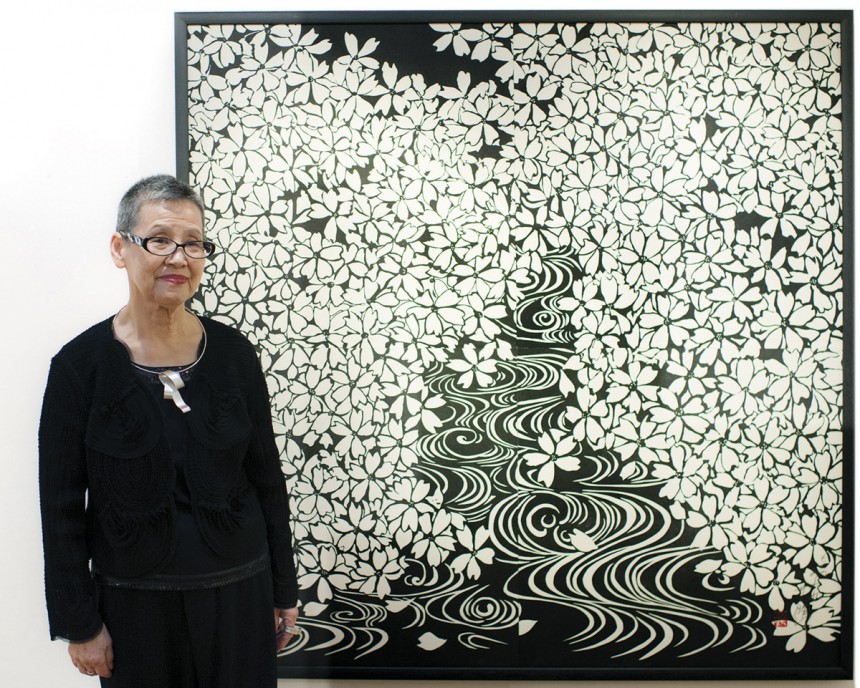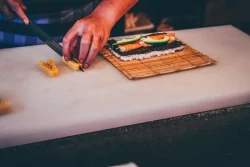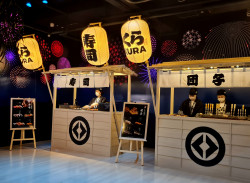
More than a half-century ago, Katsue Inoue, one of the artists featured in the College Women’s Association of Japan’s (CWAJ) upcoming October Print Show, fell under the spell of the raven-haired beauties of Edo-period ukiyo-e. While all the other colors in the centuries-old woodblock prints had faded, Inoue noted the luxuriant jet-black hair was still vivid and alive. The hair of these stylish Edo beauties inspired her to pursue the perfect black ink for her own dramatic flower prints.
Inoue, now 82, works relentlessly to create this perfection. She makes her own ink, mixing crushed Indian ink sticks with water. Every day for months, she skims off impurities and glue (a binding agent in the ink) and changes the water. She then grinds the sediments with a mortar and pestle 5,000 times, mixes the powder with water and strains it through cotton cloth.
Inoue began her artistic journey as a kimono dyer. She studied yuzen-zome, a resist-dyeing technique that involves painting with multicolor dyes directly onto silk. She was already teaching young girls these techniques when she started to learn woodblock printing from a fellow volunteer artist in her early twenties.
In the 1970s, legendary print artist Shiko Munakata spotted her talent. He was so captivated that he stood stock still, his face nearly touching the print.
Munakata took Inoue under his wing. He told her, “Flowers are your thing.” Inoue considers them her lifelong friends. She places her rich, pure-black ink over a woodblock she’s carved with a minimalist floral design, then presses Echizen-washi (handmade paper) overtop. Her flowers bloom as they take on the ostensibly black ink’s hidden colors. Though having gone from multicolor yuzen dyeing to monochromatic woodblock prints, she has never abandoned her colors, but embraces them in her sensual black ink.
Inoue’s striking print, Waltz, is available for purchase at the CWAJ Print Show, Oct 17-19 at the Tokyo American Club. See exhibition listings for details. www.cwaj.org







